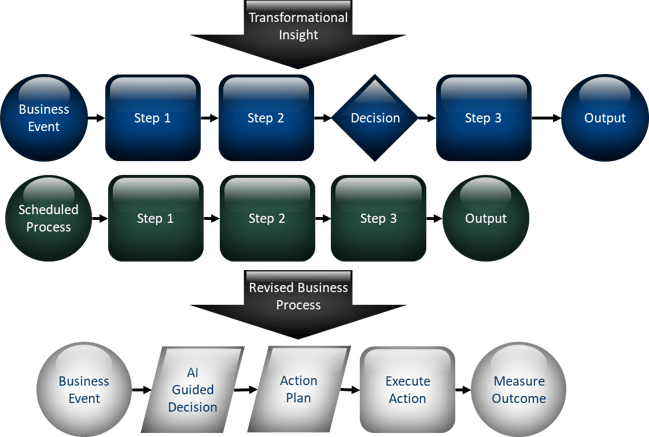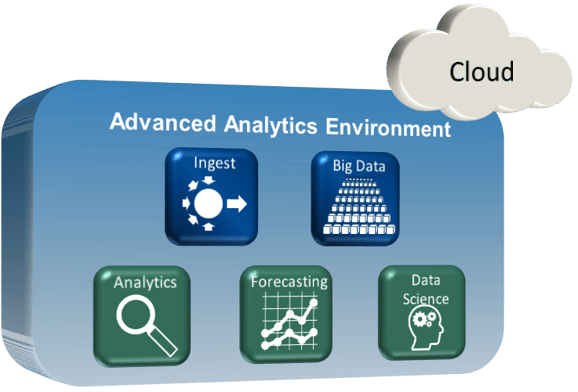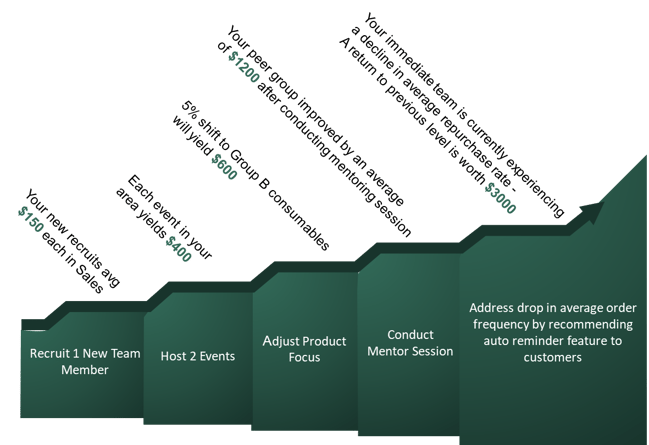by Scott Chesney & Thomas Clarke –
The direct selling business is nothing if not dynamic. The very large number of sales associates and the constant churn of individuals in and out of the organization make measurement hard and prediction seem impossible. Success requires accurate and current insights into customer and sales associates’ profiles, status, motivations, and behaviors. Independent sales associates, keenly aware of their sales targets and financial incentives, adapt their behaviors based on their situation. All too often, these adaptations run counter to what the direct selling company intends or desires. Likewise, customers continually demand a better, more personalized and convenient shopping experience, but their actual purchase behavior may vary widely.
Any successful company probably already leverages a variety of operational reports and dashboards to keep a finger on the pulse of their business. But especially for direct selling companies, is that “healthy pulse” a true measure condition of the system? And further, does it do anything to predict the future? If the pulse slows, should action be taken? If so, what action is best? And if you identified a desirable change, could your organization even execute the necessary actions? If you face any of these questions, you probably need some insight driven business transformation.
Transformation
“Don’t spend time beating on a wall, hoping to transform it into a door.” – Coco Chanel
It is a truism to say that transformation is hard. Even the proliferation of data sources and tools and visualizations and reports have mostly failed in the promise of identifying the need for change and in determining the right changes to make. It is one thing to identify and confirm that a change is necessary to achieve a business result, but it is quite a different thing to successfully implement that change in a complex organization. In most cases, IT departments and Business Intelligence (BI) groups struggle to make the jump from operational performance data to predictive business insights that drive business transformation. It is almost an unreasonable expectation given the skills, systems, and processes they currently possess.
Common challenges to getting transformative valuable insights in direct selling companies include:
- Difficulty in modeling the dynamics of the business
- Inability to identify the real business drivers
- Poor visibility into areas of business risk
- Lack of experience with enhanced modeling tools and techniques to make accurate predictions.
- Complexity of deployment and implementation processes
The direct selling company needs to start by getting a handle on the data necessary to model the business and determine potential actions. A better model of the business, including best-in-breed data analytics and visualizations, combined with deep business experience and augmented with the latest in data science, machine learning, and artificial intelligence provides the context in which new insights and business changes can be discovered, refined and tested.
These transformational insights then must be considered and prototyped against current processes to establish revised processes and tools that are more responsive and adaptable. Ideally, the new processes leverage the tools & techniques of the new business data model, including machine learning and AI, to guide decision making and develop action plans for sales associates. The next sections talk more about building the business data model and using it to create action plans.
Agile Insights
We have talked above about how traditional reports and dashboards do not necessarily provide insights into optimal future decisions and are often difficult to enhance and slow to respond to business changes. Analysis needs to be freed from bonds of existing solutions.
To do this we look beyond the internal, on-premise, long-lead-time procurement efforts in most companies. Cloud technologies, with fully integrated data security solutions, allow for immediate environment setup and flexible configuration.
Cloud providers and environments allow a range of models from self-service to full managed platform offerings. If you have a business analytics group with the desire and skills to manage the entire configuration yourself, then you can just get the raw compute and storage options and build and maintain environments yourself. Alternatively, you can leverage others who specialize in this area, including experienced firms like RCG, to provide this full-service environment capability. With the right expertise, a cloud environment can be spun up in minutes, properly configured and secured in hours and have data loads underway by the end of day one.
Compressing the Time to Analysis
Once the environment is established and secured, the key data must be procured and prepared. Data preparation has historically taken most of the time in any data analysis effort. The timeframe for these tasks are heavily dependent on the following key factors:
- Types of data stores and data format
- Initial quality of the leveraged data
- Maturity data governance processes
- Barriers to source data access
- Limited understanding of what data is used in what business function
- Data classification and categorization
Any data preparation effort follows these stages:
While all these stages happen in any data project, an experienced implementation partner with deep business and technical skills, using best practices and modern technology, can tremendously reduce the time required. See our previous blog on Agile Analytics.
Action Plans
Direct selling companies face a unique challenge in implementing change across many thousands of independent sales associates. The key to positively impacting these associates’ behavior is to arm them with personalized action plans that provide them, not with analysis, but with recommended actions and quantified benefits to their personal advancement goals. Direct selling associates are entrepreneurs themselves, and often welcome and utilize informed guidance on growing their individual business segments.
There are many factors that may impact a customized action plan. Some examples include:

Action plans, even customized ones, are not new in direct selling. But historically they have not reliably provided the expected results. One missing piece has been the lack of data science modeling that could more reliably predict outcomes of the possible actions and speak specifically to potential activities and strategies and the likely outcomes and benefits. Consider for example the impact of providing the picture below to your front-line associates.
Summary
The steps to success in transforming direct selling with agile insights include:
- Model the business to understand and leverage the key business drivers that impact outcomes.
- Determine the transformations that most impact the business drivers to benefit the organization’s ultimate goals.
- Compress the time to analytics by using current tools and approaches to facilitate efficient data prep.
- Break down analysis complexity by building up key business data models incrementally.
- Predict impacts of possible actions for various business, customer and sales associate scenarios.
- Effectively define and communicate action plans to sales associates
The direct selling industry will continue to evolve and the approaches that worked yesterday are not likely to work tomorrow. You may know exactly what is happening and be pretty sure you understand why it is happening, but do you know exactly what to do about it? How do you make it happen?
Read more about using Analytics in Direct Selling



